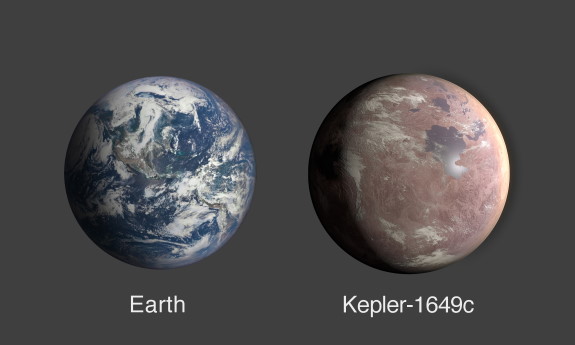
Posted on Thursday, April 16 2020 @ 15:38 CEST by Thomas De Maesschalck
NASA announced the discovery of an Earth-sized exoplanet that orbits its star's habitable zone. Named Kepler-1649c, the planet is only 1.06 times Earth's radius and is believed to have a similar temperature. Most exoplanets found to date are considerably larger. Interestingly, the planet was discovered by looking through old data from the Kepler space telescope. Interestingly, Kepler-1649 was previously deemed as a false positive by the Robovetter algorithm. Full details
at NASA.
Scientists discovered this planet, called Kepler-1649c, when looking through old observations from Kepler, which the agency retired in 2018. While previous searches with a computer algorithm misidentified it, researchers reviewing Kepler data took a second look at the signature and recognized it as a planet. Out of all the exoplanets found by Kepler, this distant world – located 300 light-years from Earth – is most similar to Earth in size and estimated temperature.
This newly revealed world is only 1.06 times larger than our own planet. Also, the amount of starlight it receives from its host star is 75% of the amount of light Earth receives from our Sun – meaning the exoplanet's temperature may be similar to our planet’s, as well. But unlike Earth, it orbits a red dwarf. Though none have been observed in this system, this type of star is known for stellar flare-ups that may make a planet's environment challenging for any potential life.
Here's an artist's impression of how Kepler-1649c may look like.

